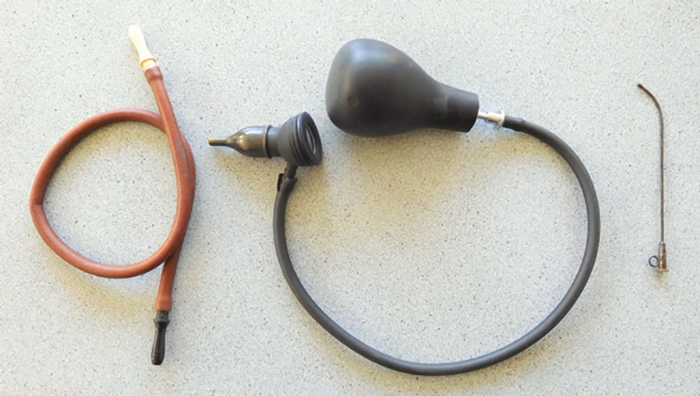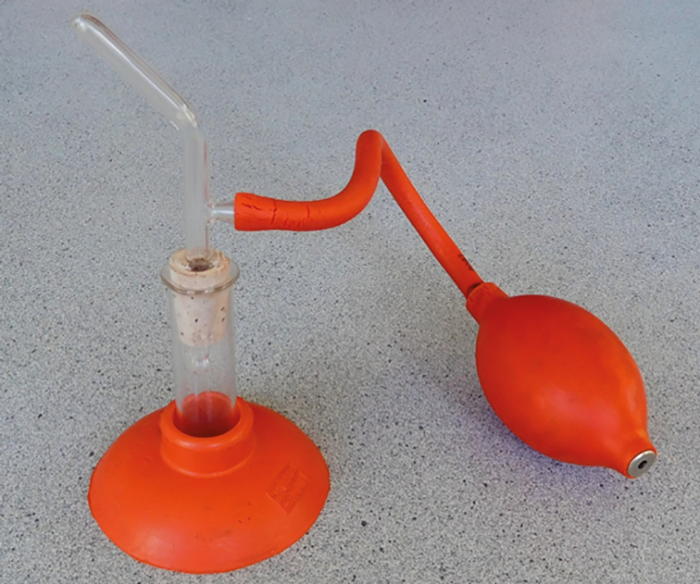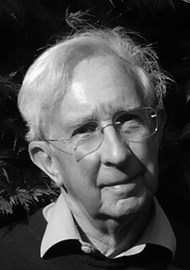Cocaine in abundance, eustachian tube catheterisation, and the ever-present threat of a fire in the clinic… How have things changed in the last few decades? Retired ENT surgeon, Douglas MacMillan, tells us of his experiences starting out in the late ’60s.
On a recent visit to an esteemed former colleague to have my ears cleared of wax, I was struck by how much ENT clinics had changed since my first introduction to the specialty. Despite the surgeon sitting alongside a gleaming console furnished with endoscopes, a microscope attached to the patient’s chair, single-use instruments, and far fewer patients to be seen in each clinic, there was an all-pervading air of gloom regarding the state of the National Health Service. Much has changed in half a century.

(L-R) Auscultation tube for Eustachian catheterisation; Seigel’s speculum; Eustachian catheter.
I was appointed SHO to the ENT Department at St Bartholomew’s Hospital in 1968. On entering the clinic, the first impression was of brisk efficiency. Nurses wore caps and starched aprons, the surgeons wore white coats, and the desks were festooned with rows of gleaming laryngeal mirrors and other instruments. A steriliser would be happily bubbling away in the sluice, and in larger hospitals (like Bart’s!) a microscope would be available; but in peripheral units (of which there were many in the East End of London) ears had to be cleaned ‘naked eye’ with a Jobson Horne probe, cotton wool, and a wax hook. Nurses became experts in removal of wax with ear syringes, and I do not recall any catastrophes resulting from this practice…
The clinician’s desk was furnished with a mysterious selection of rubber tubes. A Siegel’s pneumatic speculum (a magnifying lens which clipped onto an aural speculum and which was attached to a rubber bulb) was used to assess the mobility of the tympanic membrane in the pre-tympanometry days, and a Politzer bag was available for the messy process of ‘Politzerisation’ to attempt to open blocked Eustachian tubes, usually resulting in both the patient and surgeon getting wet shirts.

Roger’s Crystal Spray, used to cocainise the nose.
A further tube - furnished with a white nozzle at one end and a black one at the other- was still in use by some older surgeons for the procedure of Eustachian tube catheterisation; the white nozzle (of ivory or bone) was inserted into the surgeon’s ear, while the black one was placed in the patient’s ear. Gentle pressure exerted through yet another rubber bulb attached to the catheter was applied and the surgeon (hopefully!) heard the squeak of air entering the middle ear as the Eustachian tube was unblocked. Instant relief for the patient - and a repeatable source of guineas in a street in London W1.
“The surgeon’s desk was also furnished with a burning spirit lamp to warm our laryngeal and post-nasal mirrors: most of us were responsible for at least one conflagration.”
There was the cocaine spray, used to anaesthetise and shrink the nasal mucosa. One spray with the same nozzle was used on successive patients, and no record was made of the use of this potent drug of addiction. Health and safety, infection control… I do not think anyone suffered. The surgeon’s desk was also furnished with a burning spirit lamp to warm our laryngeal and post-nasal mirrors: most of us were responsible for at least one conflagration. Talking of laryngeal mirrors and indirect laryngoscopy (a sadly declining art which nevertheless gives a superb view of the larynx) reminds me that most patients over the age of 60 had full or partial dentures which had to be removed before examination of the mouth, pharynx, and larynx.

An ear syringe.
A small, darkened room was set aside for ‘transillumination’ of the sinuses - cheaper and more expeditious than X-rays (to say nothing of CT scans) - but with a degree of accuracy in diagnosing sinus disease probably of the order of 10%... A bright light was placed in the patient’s mouth: a healthy sinus transmitted the light, but one that was full of pus did not; the thought of which brings me to the next room.
In a side room, terrified patients could be found with cocainising wires protruding from their noses prior to the dreaded antral washout or local anaesthetic polypectomy. We have, however, lost out on the value of the old electrocautery for epistaxis: safe, simple and effective, which is more than can be said from scarring the nasal septum with silver nitrate. Bureaucrats and health and safety again! Talking of bureaucrats reminds me that surgeons (or their registrars) planned operating lists for the benefit, not only of patients, but also of training junior surgeons.
We had few microscopes and no endoscopes, but developed considerable manual dexterity in carrying out ENT examinations in the (almost) pre-technological age. The philosophy of ‘when in doubt, have it out’ was almost universally applied to terms and conditions in the pre-PCT and CCG days, but I do recall that we communicated less well with our patients, some were not even told of their diagnosis of cancer. Mention complications? No, never - well, hardly ever!
Yes, much has changed. The microscope and endoscope have transformed our outpatient work and the advances in imaging have been little short of miraculous. I think we are less pompous and more accessible to the patients and staff, although admittedly the ENT fraternity produced very few Sir Lancelot Spratts! At the end of the day - as a young ENT registrar said to me last week - one thing has not changed, and that is the relationship between surgeons and their patients.
Plus ça change, plus c’est la même chose.




